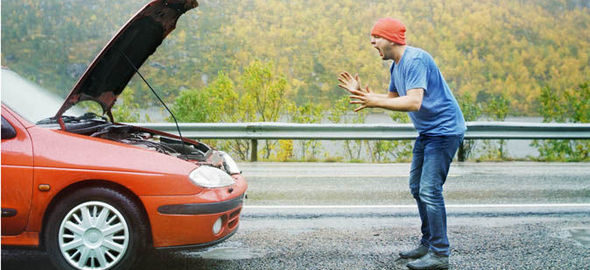As the temperature drops in Autumn, especially in colder areas like the Chicago, Illinois area, a range of different unique driving safety risks arise. In this blog entry, the Chicago roadside towing experts here at Chicago Towing will detail some unique fall driving hazards to be aware of in order to stay safe on the road.
Brand New Drivers
Many teenagers learn to drive over the Summer – and when college starts in the Autumn, a higher degree of new drivers are on the road, many of which may not have the discipline yet to avoid distracted driving. When driving in school zones, it’s important to be extra careful, not just for small children, but also for the associated risk of young and inexperienced drivers.
Less Visibility
As Daylight Savings Time ends, the nights grow longer, and visual perception features like depth, color recognition, and peripheral vision are harder to maintain. Bright headlights on a dark road can even temporarily blind a driver. It’s essential to be highly focused when driving at night to maintain constant and strict awareness of all of your surroundings.
Animals
Many animal’s mating seasons begin in the Autumn – namely deer. If you’re driving in a rural area, be aware of the increased risk of wildlife that can jump out in front of your vehicle. This heavy and large wildlife can cause severe accidents. Make sure to be aware of your surroundings and drive slowly when traveling in rural areas or deer heavy areas in the Autumn in order to have a better chance of successfully braking in case a deer suddenly enters the road.
Leaves on the Ground
Fallen leaves can create puddles when they block drains and vents, cover road markings, or even create a slick surface on the road after rain that dangerously reduces traction. Drive more slowly if you’re driving over a pile of leaves.
Tire Pressure
As the temperature drops, tire pressure (PSI) drops rapidly, even more than the normal 1 PSI it drops with each consecutive month tires drop a pound per square inch of pressure as the temperature drops every 10 degrees. Regularly check tire pressure with a tire gauge, and be aware that the pressure on your tire sidewall is a maximum pressure, not the ideally recommended pressure.
Glare
As sunsets happen earlier, you may find yourself driving during sunset more often, especially if you work a traditional 9-5 job. Reflected light glare from sunset is more likely to bounce off buildings and other cars at a low angle, causing glare that can interfere with safe driving. Drive with sunglasses at times where the sun shines in your eyes, and try not to look directly into the lights of oncoming traffic when driving at night.
Fog
The increase of temperatures during Autumn and Winter mornings can cause fog that interferes with vision and depth perception. If there’s fog on the road, use your vehicle’s fog lights that utilize low and wide beams on the road and it’s edges. Use them IN ADDITION to your existing regular low beams. If temperatures get so low that ice forms on the road, make sure to drive much more slowly – with particular caution being paid on bridges or overpasses.

